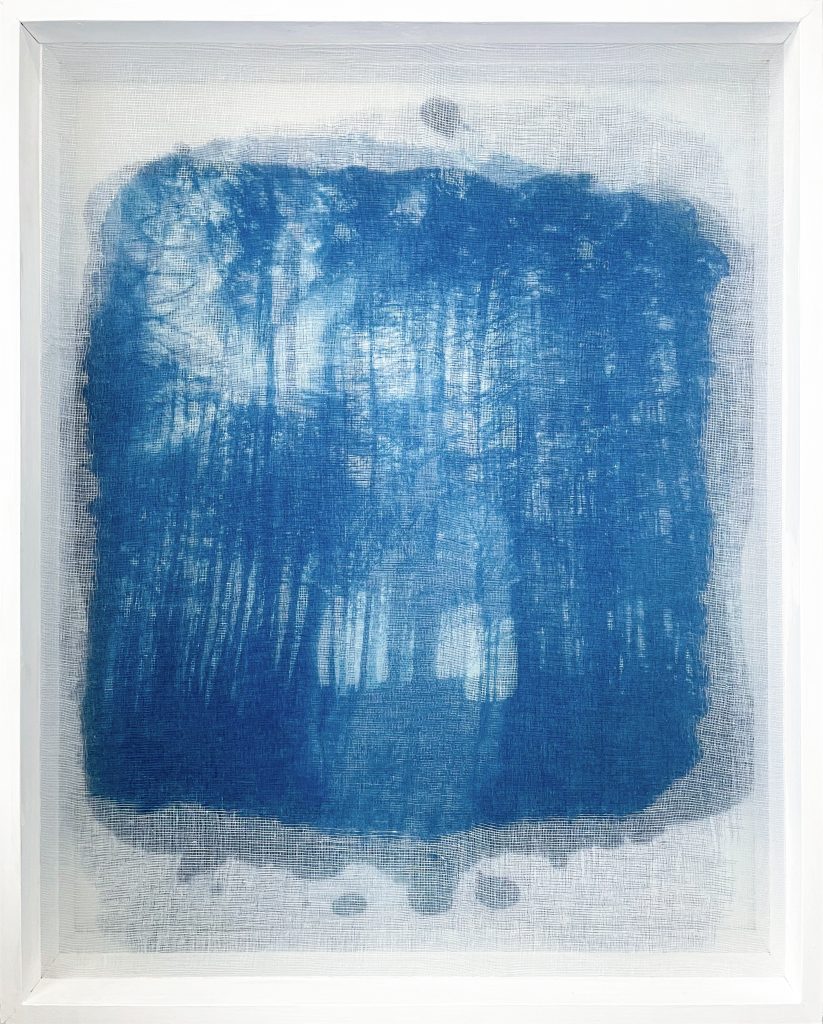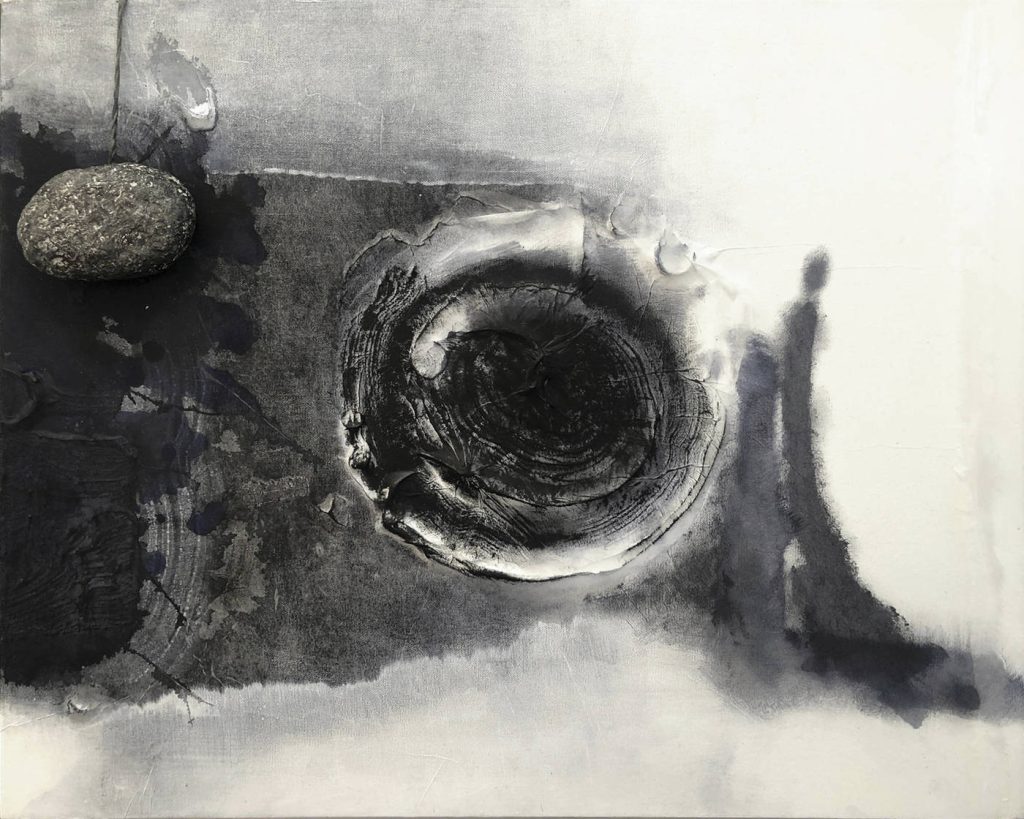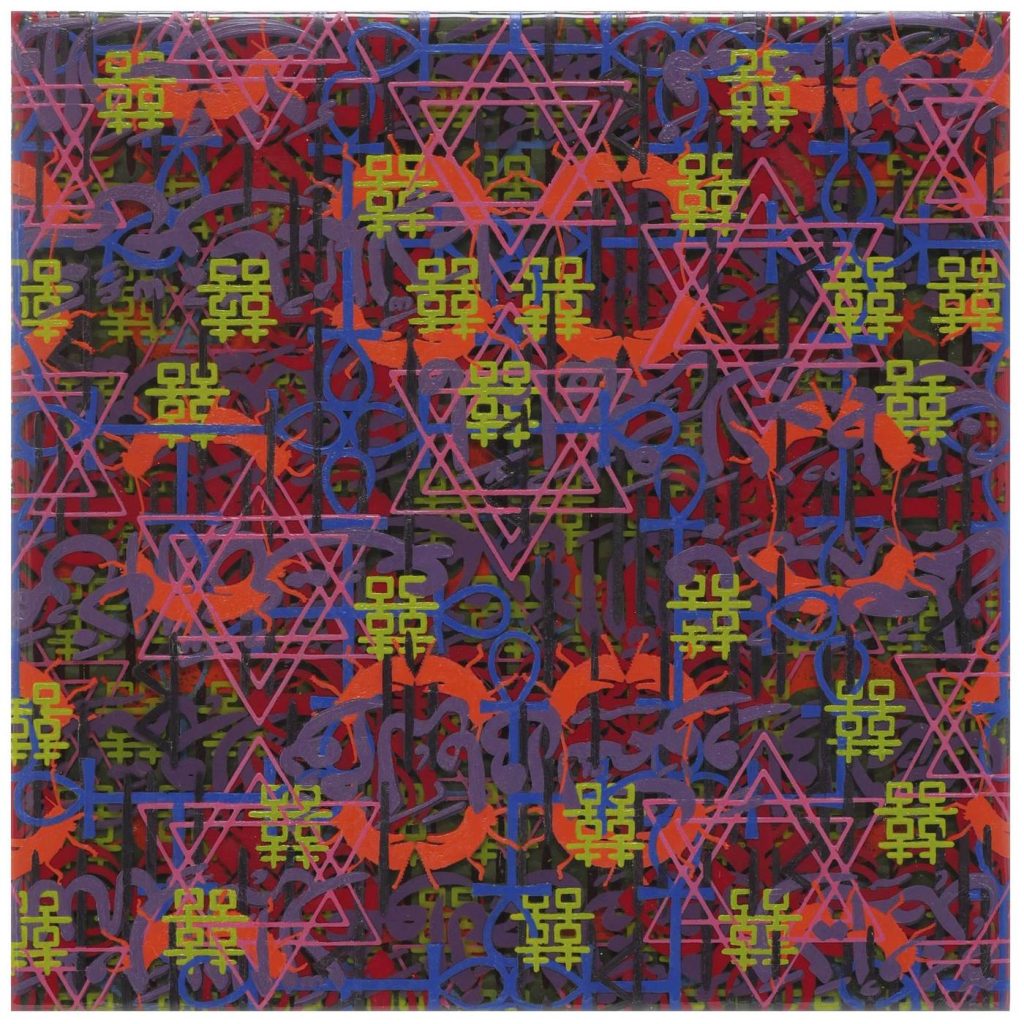by Akemi Tamanaha, associate editor
In a moment of bi-coastal collaboration, a New York art gallery is featuring three California-based Asian artists for an exhibition called “Light, Space and Time.”
The exhibit is on display at Alisan Fine Arts Gallery in New York City. Alisan Fine Arts began in the 1980s as one of the first professional galleries in Hong Kong. For years, it has been a leader in promoting Chinese contemporary art. In November 2023, the gallery decided to open its New York City location with an exhibit called “Walasse Ting: New York, New York.”
“Light, Space and Time” opened at the beginning of May, coinciding with the start of Asian American, Native Hawaiian and Pacific Islander Heritage Month. It highlights the work of Summer Mei Ling Lee, Zhang Jian-Jun and Julie W. Chang.
All three artists examine light and space through different lenses, using mediums like painting and sculpture. According to a press release from the gallery, the artwork is influenced by the historical and cultural backgrounds of each artist, adding a “time dimension” to their pieces.
“Light, Space and Time” will run through June 22. AsAmNews spoke with Lee, Zhang and Chang about their artistic journeys and their pieces featured in the exhibition.
Summer Mei Ling Lee in pursuit of the “aesthetic moment”
Art was not always in the cards for Summer Mei Ling Lee. The San Francisco-based artist was a social worker before she began focusing on art full-time.

“It’s been one of those careers that kind of chose me,” Lee said.
Lee, who is half Chinese, cites her grandmother as an influential figure in her trajectory as an artist. From a young age, her grandmother, a Chinese immigrant, made sure Lee accepted her Chinese identity, teaching her different cultural lessons.
One lesson was the idea that her grandmother and Lee’s ancestors had made many sacrifices for Lee to enjoy new freedoms, like the freedom to create art for a living.
“A lot of my work started, and I think, cycles back to her presence,” Lee said, adding, “This idea that I’m somewhere between my descendants and my ancestors and always grateful for that.”
Lee explores some Chinese myths she learned growing up in her diptych works.
In graduate school, Lee had a wonderful mentor who taught her about philosophy and ethics in art.
“Every time he just talked about the aesthetic moment, that was what I wanted to pursue and to bring about in my own artwork, which is that art feels like a gift,” Lee said.
In her gauze work, Lee invites viewers to think about otherness. Lee printed family photos on layers of gauze, allowing viewers to see different perspectives as the light passes through.
“The farther out you are, the more clear the image becomes, which I love. I love this paradox that in order to see you need space you need distance in order to see,” Lee said.
Throughout her career, Lee has received the support of organizations like the Chinese Culture Center. She feels grateful to get to work with galleries like Alisan Fine Arts that support Asian artists and hopes to lend her support to other AANHPI artists.
“I think the racism that affects Asians is one of invisibility. And so I think art is a very powerful medium to put the experience of API people or the expression of API people into the mainstream and say we’re here,” Lee said.
Zhang Jian-Jun is still evolving
Zhang Jian-Jun knew he wanted to be an artist since he was a young boy but told AsAmNews that there weren’t many avenues for young artists growing up in China during the Cultural Revolution.

When he was 14, Zhang’s art teacher noticed he had a “special talent” for art and asked him if he would be interested in participating in a special after-school art program. After a few months in the program, Zhang’s teacher offered to give him private lessons.
“He told me he said, ‘I want to teach you real art, not the propaganda you know,’” Zhang recalled. His teacher made him promise not to tell his classmates about the lessons he was receiving.
During the hot Shanghai summers, in a stuffy room, Zhang learned about everything from classical European art to impressionism. He went on to graduate from the Department of Fine Art at the Shanghai Theater Academy in 1978.
In 1987, the Asian Cultural Council of the Rockefeller Foundation invited him to New York for an academic study visit. He spent 20 years working in New York working as an artist and, eventually, a professor at NYU before moving to Los Angeles.
Six years after initially moving to New York, Zhang returned to China to visit his parents and observed that society was changing “tremendously.” He documents the changes in a series of sculptures called “China Chapter,” which feature in the “Light, Space and Time” exhibit.
The exhibit also includes a few paintings from Zhang’s “Rubbings” series. The series is meant to be a dialogue with nature, examining the sun, rain and the cosmos.
Zhang hopes that people who view his work will be able to see how his style has evolved over a decade from his roots in Shanghai to his current works.
“I’m not saying I’m Chinese artist. I am an artist with Chinese background, but I’m contemporary. So that is my direction.”
Julie W. Chang examines identity construction
For San Francisco-based artist Julie W. Chang, art is an opportunity to explore how identities are constructed, including her own.
Chang grew up as the only daughter of Chinese immigrants in an affluent beach town in Orange County, California.

“By an early age, I was already certain of two truths. I would always be haunted by questions of self and other, belonging versus alienation. I could always find refuge, meaning and purpose in the process of creating or making,” Chang said in an email interview with AsAmNews.
“In school, this led me to pursue degrees in sociology and studio art, which have continued to be the foundation for my work to this day,” she added.
Chang called her relationship with her AANHPI identity “complicated,” but emphasized her gratitude to the AANHPI community.
“To be included and so warmly embraced within the AANHPI in recent years has really challenged that story. The experience has been healing and empowering to say the least and I’m grateful for the opportunity to help grow, and to continue to grow, within this space and community,” Chang wrote to AsAmNews.
Chang’s intricate pieces reflect the diverse identities that exist around the globe.
“Working with patterns, symbols, textiles, weavings, etc. from diverse cultures allows me to celebrate differing perspectives, reflect a rich multiplicity of traditions and to invite the more difficult conversations around race, gender and class,” Chang wrote to AsAmNews.
In her Amulet series, for example, she colorful patterns are interwoven using paint and resin to symbolize “healing, wisdom, redemption, joy, enlightenment, interdependence and peace.” The series reflects on how those values exist as protective energies.
In Migration, she used a “simple mathematical system to guide the interaction of shapes and color, in order to highlight the invented structures in which we operate: rules, constraints, and possibilities.”
“Light, Space and Time” is on display at Alisan Fine Arts’ gallery at 120 E 65th St, New York until June 22.
AsAmNews is published by the non-profit, Asian American Media Inc.
We are supported through donations and such charitable organizations as the Robert Wood Johnson Foundation. This holiday season, double your impact by making a tax-deductible donation to Asian American Media Inc and AsAmNews. Less than $5,000 remains in matching grant funds. Donate today to double your impact and bring us closer to our goal of $38,000 by year-end.
Please also follow us on Instagram, TikTok, Facebook, YouTube and X.









